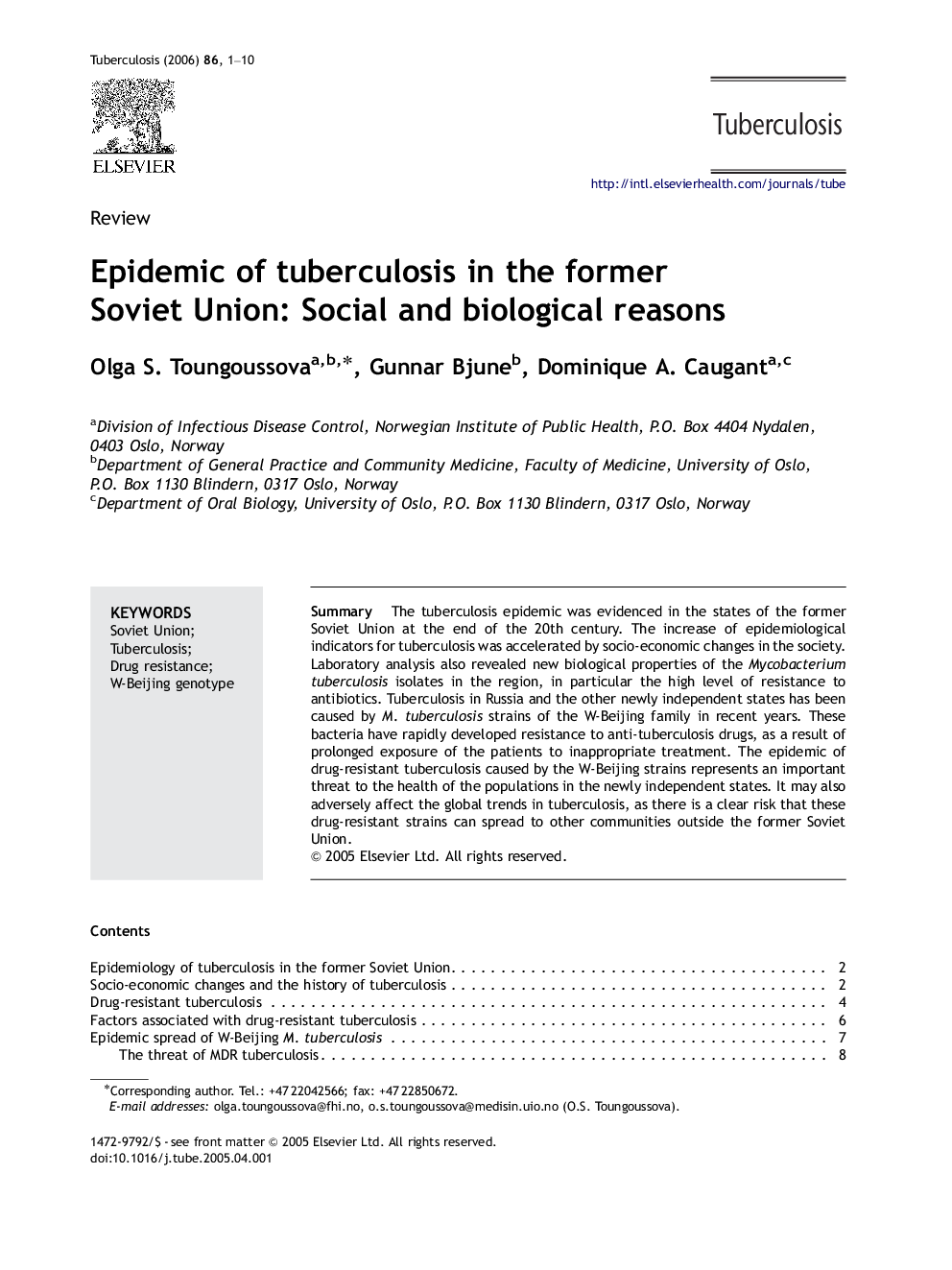| Article ID | Journal | Published Year | Pages | File Type |
|---|---|---|---|---|
| 2402072 | Tuberculosis | 2006 | 10 Pages |
SummaryThe tuberculosis epidemic was evidenced in the states of the former Soviet Union at the end of the 20th century. The increase of epidemiological indicators for tuberculosis was accelerated by socio-economic changes in the society. Laboratory analysis also revealed new biological properties of the Mycobacterium tuberculosis isolates in the region, in particular the high level of resistance to antibiotics. Tuberculosis in Russia and the other newly independent states has been caused by M. tuberculosis strains of the W-Beijing family in recent years. These bacteria have rapidly developed resistance to anti-tuberculosis drugs, as a result of prolonged exposure of the patients to inappropriate treatment. The epidemic of drug-resistant tuberculosis caused by the W-Beijing strains represents an important threat to the health of the populations in the newly independent states. It may also adversely affect the global trends in tuberculosis, as there is a clear risk that these drug-resistant strains can spread to other communities outside the former Soviet Union.
